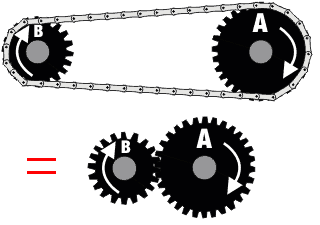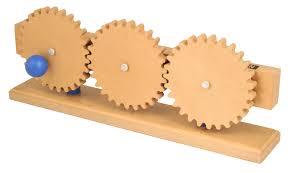What Is the Difference between a Sprocket and a Gear?
The biggest difference between a sprocket and a gear is how each works on a functional level. Both tend to be grooved wheels used in machinery, and their basic appearance is often really similar — but how they operate and what, exactly, it is they do tends to be really different. In general, a gear is a toothed wheel designed to mesh with other gears and transmit movement to them, which in turn can cause movement elsewhere. A sprocket, conversely, is a toothed wheel designed to engage and directly move a flexible indented or perforated item, like a chain or belt. The applications of each are different as a result. Sprockets are most common when there’s a moving belt or chain that is contained, as is commonly the case in bicycles, conveyor belts, and film projection reels. Gears are typically preferable in all other scenarios, cars and heavy machinery included. Not only are gears more universally useful, but they also aren’t as likely to need repairs or re-fittings.
Basic Functionality
Sprockets and gears are both used to transmit power within machines or to move items by interlocking with them. A sprocket usually interacts directly with some part of the machinery at issue, however, whereas gears can and often do push against each other first, then use that collective movement to influence some larger mechanical process. Another way of expressing this is that sprockets have to work independently, but gears can use networks to build strength and precision. The difference is usually most noticeable when looking closely at the grooves or teeth of each.In the case of a sprocket, the teeth are constructed to fit precisely into the perforations or slots of the items that the tool is designed to move. The possibilities for design variations tend to be somewhat limited as a consequence. Gears, on the other hand, mesh directly with each other, and thus lend themselves to a wide variety of applications. For instance, a gear’s teeth might be on the outside of the wheel or on the inside circumference; another type, called a worm gear, isn’t a wheel at all but a threaded rod.
Impact of Damage
Another important difference between a sprocket and a gear is what happens if either is damaged. The two sprockets that carry a bicycle chain, for example, also guide the chain in a straight line, and if a single tooth on one of the sprockets breaks, the chance of the chain’s being thrown off increases. A broken chain will generally incapacitate the entire bicycle. If a tooth breaks off a gear, on the other hand, assuming the broken tooth falls out of the machine’s works, there’s little likelihood that the machine itself will fail as a result, although it may experience reduced efficiency. In most cases, the damaged gear’s load can shift to another without causing much strain.Common Uses for Sprockets
Aside from bicycles, sprockets are also commonly found on tracked vehicles like tanks and bulldozers and in film cameras and film projectors. In each, rotation of the sprocket moves a flexible device, like a chain, a belt, or a strip of photographic film. In those cases where the flexible device is a continual loop, as in bicycles and tracked vehicles, the many segments that make up the loop make it more vulnerable to wear and tear. In some cases this necessitates more maintenance, and also means that sprockets are typically placed on the outside of appliances, or at least behind panels that are relatively easy to access.Situations Where Gears Are Best
Gears are found in the inner workings of many if not most machines. They're an integral component of automobile engines, for example, where they work transmitting power from the engine to the drive wheels. Some gear arrangements, like worm drives, can limit the transmission of power to a single direction without any additional devices like brakes. Precision-made gears also operate many clocks and watches.The functional differences between a sprocket and a gear combined with the gear’s general superiority over the sprocket usually lead designers to choose gears when they can. A commonly-cited example is cars and trucks with rear-wheel drives, which employ a rigid drive shaft to transmit power from the engine to the drive wheels. Bicycle-type chain drives were popular with some of the first automotive vehicles, but their popularity waned with time; the last chain-driven car was manufactured in the 1960s.



Comments
Post a Comment